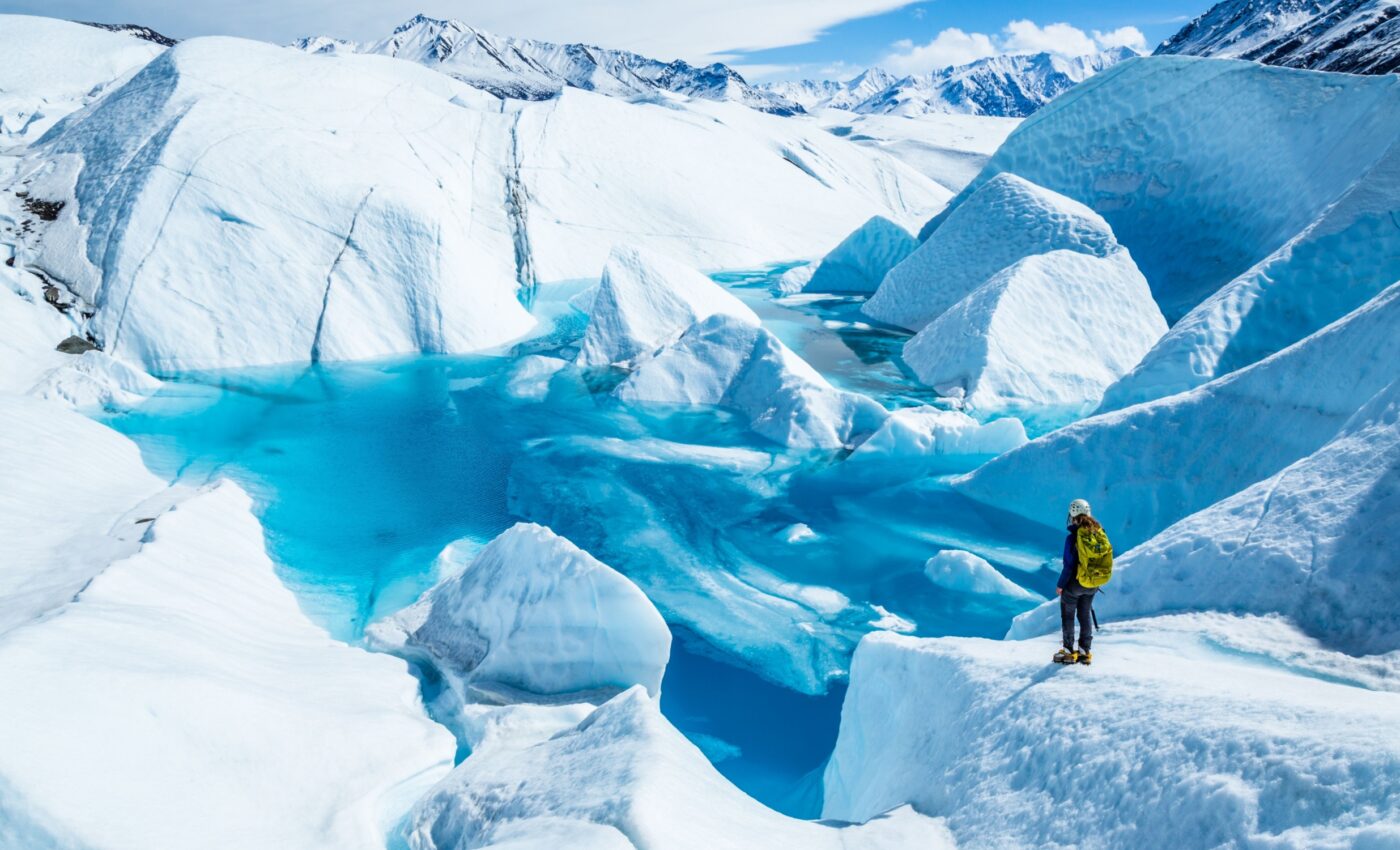
Antarctic ice shelves are fracturing from meltwater weight
As the world witnesses the impacts of a warming climate, Antarctic ice shelves face a precarious future. Recent research led by the Cooperative Institute for Research in Environmental Sciences (CIRES) has uncovered alarming evidence on how these ice structures are not just bending under pressure but are actively fracturing.
Ice shelves under pressure
Floating ice shelves in Antarctica act as critical barriers, holding back glacier ice from spilling into the ocean. However, when air temperatures rise, melting glacier ice forms pools on these shelves, significantly weighing them down.
This increased weight causes the ice to bend and, as newly observed, to fracture dramatically. Such fractures can lead to the eventual collapse of these ice shelves, further exacerbating sea level rise – a concerning prospect for global coastal regions.
Alison Banwell, a CIRES scientist at the Earth Science and Observation Center and lead author of a recent study, emphasized the critical role of ice shelves in maintaining the stability of the Antarctic Ice Sheet.
“Ice shelves are extremely important for the Antarctic Ice Sheet’s overall health as they act to buttress or hold back the glacier ice on land,” Banwell explained.
This study, which marks the first field-based observation of its kind, confirms longstanding theoretical models that predicted the susceptibility of ice shelves to fracturing due to surface meltwater.
Antarctic ice shelves fracturing
Banwell, along with her team from the University of Cambridge, University of Oxford, and University of Chicago, conducted field research on the George VI Ice Shelf, located on the Antarctic Peninsula.
In November 2019, the team set up camp around a known depression in the ice, a site prone to collecting meltwater. Equipped with high-precision GPS stations, water-pressure sensors, and a timelapse camera system, they meticulously recorded the changes occurring on the ice surface.
Despite the disruptions caused by the COVID-19 pandemic, the team resumed their work in November 2021. They found that the remaining instruments had captured significant ice movements and the formation and drainage of a meltwater lake during the record-high melt season of 2019/2020.
The data revealed that the ice in the lake’s center flexed downward by approximately a foot due to the weight of the accumulated meltwater, while the horizontal distance between the lake’s edge and center also increased, indicating the formation and widening of circular fractures on the ice shelves.
Ice shelves fractures and chain reaction of collapse
These observations provide crucial insights into the mechanics of ice shelf disintegration. “This is an exciting discovery,” Banwell stated. “We believe these types of circular fractures were key in the chain reaction style lake drainage process that helped to break up the Larsen B Ice Shelf.”
Her reference to the abrupt collapse of Larsen B in 2002, which saw thousands of meltwater lakes abruptly drain, underscores the potential for similar events to occur if current trends continue.
Practical insights and global implications
The results of this research are not just academic; they have practical implications for improving models that predict the stability of Antarctic ice shelves.
By understanding the specific conditions that lead to ice shelf fracture, scientists can better forecast which shelves are most vulnerable to collapse. This knowledge is vital for anticipating the impacts of these collapses on global sea levels.
Furthermore, as the evidence mounts, the urgency to address the underlying causes of climate change becomes even clearer.
Antarctic ice shelves serve as a stark reminder of the broader environmental challenges that lie ahead, and the need for sustained scientific inquiry and environmental stewardship to mitigate these global threats.
Antarctic ice shelves
Antarctic ice shelves are massive floating platforms of ice that form where the continent’s ice sheets meet the sea. These shelves are fed by the slow flow of glaciers and thick ice from the interior of Antarctica. They are critical components of the Earth’s climate system because they act as barriers that regulate the flow of ice into the ocean.
Stability of ice shelves
When ice shelves are stable, they slow down the discharge of ice from glaciers. However, if they thin or break up, this can lead to a faster flow of ice into the ocean, which contributes to sea-level rise.
The stability of ice shelves is influenced by both atmospheric and oceanic temperatures. Warmer air can melt the surface of the shelves, while warmer ocean currents can erode their underbellies.
This dual assault can make them vulnerable to break-up and disintegration. Events like the dramatic collapses of the Larsen A and B ice shelves in 1995 and 2002 respectively, highlight the susceptibility of ice shelves to changing climate conditions.
Ecological role
Moreover, Antarctic ice shelves are also important for their ecological role. The underside of these ice platforms supports a unique ecosystem that includes algae, krill, and various fish species, which in turn are crucial for larger predators like whales and seals.
Polar research
Scientific studies of these ice shelves are crucial for understanding not only the mechanisms of their change but also the broader implications for global sea levels and climate feedback loops. As such, they are a focal point of polar research, often involving satellite monitoring, field expeditions, and advanced climate modeling.
The study is published in the Journal of Glaciology.
—–
Like what you read? Subscribe to our newsletter for engaging articles, exclusive content, and the latest updates.
Check us out on EarthSnap, a free app brought to you by Eric Ralls and Earth.com.
—–













